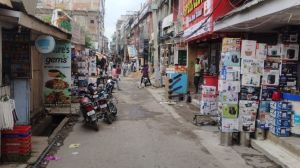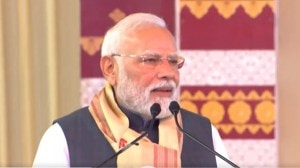Drip irrigation powered by the sun
Punjab launches solar-powered pumps for drip irrigation to save water and power,draws in farmers with 70% subsidy
Punjab will this month start giving farmers a 70 per cent subsidy on solar-powered submersible pumps for drip irrigation,which would help save 40 to 60 per cent water,besides electricity when demand peaks.
Some experts feel the decision has come a little late in Punjab,known for adopting innovative farming methods. Neighbouring Rajasthan had stolen a march on Punjab in 2010 by offering an 86 per cent subsidy for solar pumps for drip irrigation. Punjab did experiment with centrifugal solar pumps a few years ago,but those did not prove efficient.
Officials say the combination of drip irrigation (directing water and fertilisers to the roots through pipes slowly and by regulating the flow through valves,thus preventing wastage) and solar pumps would enhance the summer crop yield.
Drip irrigation and solar pumps are like husband and wife. They complement each other, says Dr Rakesh Sharda,extension specialist and principal investigator,department of soil and water engineering,Punjab Agricultural University (PAU),who has been working on a model for a solar-powered drip irrigation system for the government.
The Punjab Energy Development Agency (PEDA) will this month distribute among farmers 100 solar-powered submersible pumps with a 70 per cent subsidy,shared 30:40 between Centre and state.
Says M P Singh,joint director with PEDA,says,More than farmers,it is the government that will benefit as subsidy on power will be saved and drip irrigation will save water. Each submersible pump will be of 2 HP,enough for an orchard or a vegetable field. Green power is the only way for the future.
PEDA has received hundreds of applications for submersible solar pumps from farmers using drip irrigation,and the horticulture department will select the beneficiaries.
PAU has conducted a demonstration of solar pump-driven drip irrigation in poly houses as well as fields. Poly houses growing capsicum,cabbage,papaya,flowers like rose,gerbera have shown better growth and fruit health with drip irrigation.
Talking about flower cultivation,Sharda says,Roses and gerbera have shown better flower size and health. We import flowers in huge quantities. Thousands of crores of rupees can be saved if farmers use poly houses with solar-powered drip irrigation to grow flowers.
The solar power-drip irrigation combination is not new to Punjab,which explored the concept a few years back. It failed as the centrifugal solar pumps proved inefficient in pumping water after a certain depth. The dipping water table in Punjab made the system redundant.
Earlier,the solar pumping system was not popular owing to low capacity and low penetration. The pumps available at the time were centrifugal pumps,suitable for pumping from shallow aquifers or water tanks. Now,the solar photovoltaic pumps are available in a range from 1 HP to 10 HP. A 2- or 3-HP pump connected to a drip irrigation system is sufficient for an orchard of about 5 hectares,or a vegetable/field crop on 2 or 3 hectares, Sharda says.
Other positives in the system include the reduction of weed as there is a directed use of water,absence of soil erosion,and flexibility in operations. The system is easy to install,saves on labour cost,and is suitable for all terrains.
Diesel pumps are characterised by lower installation cost and higher operation and maintenance costs. Solar pumps have high initial cost but low or negligible operation and maintenance costs.
We also got positive results for other crops with this system such as guava,wheat,winter maize and cotton. The Centre is developing schedules for drip irrigation and fertigation that would save water and enhance yield, says Sharda.
Photos



- 01
- 02
- 03
- 04
- 05




























